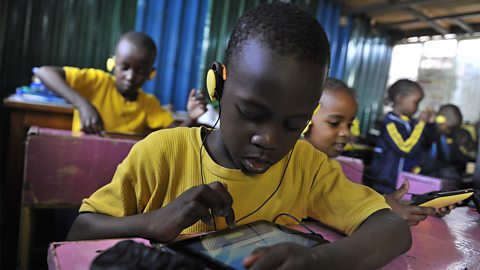Responses to uneven development
Aid
Aid is assistance given from one country to another. It includes money, equipment, training and loans. It can be foreign aid from the government of one country to another - or from non-governmental organisation (NGO)A company that does not work for the government, eg a charity. to a country or region.
There are several different types of aid.
- Bilateral aid (also known as 'tied aid') - the country receiving the aid must spend the money on goods and services from the country providing it.
- multilateral aidWhen more than one country gives aid to another country. - high-income countries donate money through organisations such as the United Nations (UN) and the World Bank.
- Short-term emergency aid - provides immediate support during or after a disaster such as famine or a tsunami. It includes food, medicines and tents.
- Long-term aid - such as education for young people, is a continuous programme which aims to improve standards of living.
- Debt abolition - is when richer countries cancel the debt owed to them by poorer countries.
- Non-governmental aid - aid provided via charities. This type of aid may provide emergency relief or may support small scale projects such as wells to provide clean water.
Aid in Kenya
More than 17 million Kenyans do not have access to safe water. This has an enormous effect on health and infant mortality. 33 million Kenyans do not have access to a toilet and more than 10,000 children in Kenya die every year from illnesses like diarrhoea and malaria.
Non-governmental aid
Christian Aid, together with its partner, Maji na Ufanisi, which means 'Water and Development', has been working in the slums of Nairobi, to provide clean and safe water supplies. Measures include:
- A system of drains - installed to remove waste from the slum and prevent flooding, which is a significant problem during the rainy season.
- A sanitation block - partly funded by the local government, consisting of toilets, showers and a water kiosk. Training has also been given in how to manage them.
- Local people have been employed to clean and maintain the toilets and showers.
The outcomes of having clean, safe water supplies are:
- fewer cases of illnesses have been reported since the drains were installed
- clean drinking water, which has helped people's health
- attitudes have changed towards health and sanitation
Foreign aid in Kenya
In 2012, Kenya received US$2,654 million in foreign aid, making it the 11th largest recipient of aid. Foreign aid is given by governments through individual countries' international aid agencies, and through multilateral institutions such as the World Bank. Aid given is generally intended for a specific use:
- building and infrastructure improvements
- funding education programmes or initiatives
- sending experts (such as doctors) into areas to help set up projects
- providing basic provisions, such as food and other essentials following a disaster
